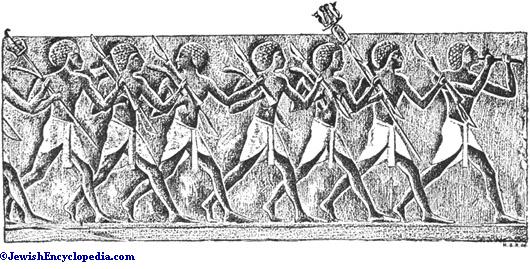ARCHEVOLTI, SAMUEL BEN ELHANAN ISAAC:
Italian grammarian, and poet of the sixteenth century. Many of his piyyuṭim were embodied in the Italian liturgy, notably his "Song on Circumcision." He was an excellent Talmudist, and, when quite young, reedited or rather supplied with extensive textual references, the 'Aruk of Nathan b. Jehiel under the title "Sefer ha-'Aruk" (Venice, 1531). His book "Degel Ahabah" (The Banner of Love), an ethical work with commentaries, was printed in Venice (1551). The most notable of his works are (1) "'Arugat ha-Bosem" (The Bed of Spices), a Hebrew grammar (Venice, 1602; reprinted, Amsterdam, 1730), and (2) "Ma'yan Gannim" (A Fountain of Gardens), fifty metrical letters, designed to be models for students of this form of composition (Venice, 1553). Of these two books the more important is the Hebrew grammar, because the subject is exhaustively and originally treated. Twenty-five out of the thirty-two chapters are devoted to the rudiments of the language. Chapters twenty-six and twenty-seven treat of Hebrew accentuation; chapters twenty-eight and twenty-nine discuss perfect style; chapter thirty treats of steganography and Biblical cryptography, and chapters thirty-one and thirty-two treat of the neo-Hebraic meter, with original models of style and method. The last chapter pleased John Buxtorf the younger to such an extent that he translated it into Latin, appending it to his translation of the Cuzari (1660). Archevolti, who loved the Hebrew language and delighted in its poetical phrasing and shading, was disinclined to uphold the ideas advanced by Judah ha-Levi, who, though one of the greatest Hebrew poets, did not care to treat Biblical subjects poetically, maintaining that they did not readily lend themselves to such treatment. Archevolti held the opposite view, and in respectful terms wrote against his famous predecessor, employing the Talmudic bit of satire, "The dough must be bad indeed if the baker says it is."

- Fürst, Bibl. Jud. s.v.;
- Steinschneider, Cat. Bodl. No. 7004;
- Delitzsch, Zur Gesch. d. Hebr. Poesie, p. 6.
